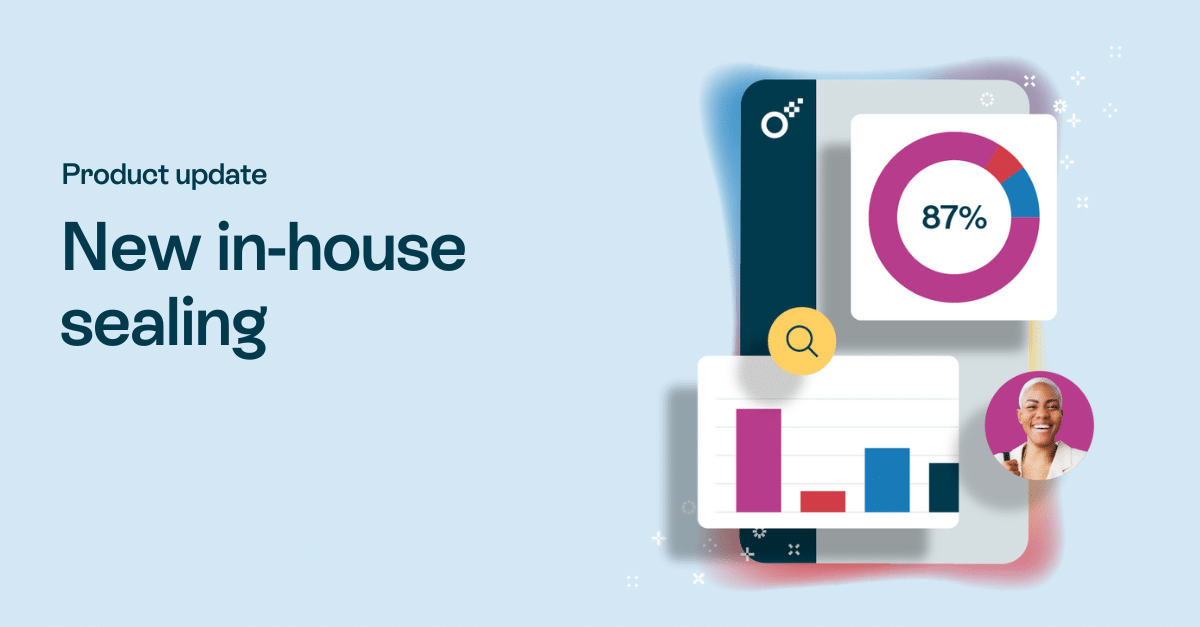Your SaaS company needs a lead nurturing strategy.
Data shows that lead nurturing helps companies generate 50% more sales-qualified leads with a 33% reduction in customer acquisition costs.
If you can implement a lead nurturing system that works for your company, you’ll quickly see the benefits.
In this guide, you’ll learn about five actionable tactics SaaS companies can use to nurture their leads into customers. Let’s jump straight in.
What is lead nurturing?
Lead nurturing is the way you build relationships with your prospects and leads while they’re in your sales pipeline to improve the chances of them converting into a customer.
You’ll use different messaging, touchpoints, and content types to educate your leads and ensure they stay engaged in your sales process.
As your lead moves through the buying process, your lead nurturing tactics will change to match their level of knowledge.
5 actionable SaaS lead nurturing tactics to boost conversions
1. Personalized follow-up emails to increase replies
After you send a cold email campaign to qualified prospects, you’ll start to get replies. However, not everyone will get back to you at first. Data shows that 55% of replies to email campaigns come from a follow-up step – so it’s essential that you include them.
If you’re sending your cold sales emails from a cold email tool like QuickMail, you can easily add follow-up emails that are sent automatically if someone doesn’t respond.
But, following up by itself isn’t enough.
You need ways to segment and personalize your follow-ups to get the best responses.
The first way to get more results from your follow-ups is to segment campaigns based on data you have on your leads.
For example, if you have a list of prospects who are all CEOs, you can add those to a specific campaign with value propositions and benefits relevant to them.
You can have a separate campaign for different lead segments, such as CFOs, growth marketers, or whoever else you’re targeting.
As well as that, you can have dynamic campaigns that trigger based on actions that your prospects take while in your sales pipeline.
You can create campaigns for events like a prospect downloading an eBook, starting a free trial of your SaaS tool, or booking a demo meeting.
It’s easy to set up targeted campaigns like this in Zapier.
In the screenshot below, we’ve created a sequence that starts when someone fills out a specific lead form in your Facebook Ad. Then, they are added to QuickMail and will receive a specific email campaign with information relevant to their stage of the buying journey. At the same time, a new deal is created in Pipedrive so your sales team can see if they’re qualified and keep track of their status.
This ensures every lead in your pipeline receives perfectly timed emails tailored to where they are in their buyer journey.
2. Keep your lead’s attention with multi-channel outreach
Your sales leads don’t buy in a linear fashion.
Gartner research found that B2B buyers spend 27% of their buying journey researching independently online, and 18% researching offline. Within those categories, there are multiple different resources and channels buyers reference to help them with their decision, such as:
- LinkedIn discussions
- Web search and viewing online content
- Social media conversations
- Virtual product demos
Source: The B2B Buying Journey | Sales Insights | Gartner.com
You need to invest in multi-channel lead nurturing to ensure you’re giving your leads the right information on the channels they’re spending time on.
Here are some channels and examples of tactics on each one that you can leverage to nurture your leads:
- LinkedIn: Buyers use LinkedIn in multiple ways. They read content on the feed, and you can make sure your company is showing up by leveraging targeted ads. As well as that, you can use Sales Navigator to send personalized InMail messages to leads in your pipeline. This works particularly well if you haven’t heard from a lead in several days, as it reminds them you’re there and ready to help with their decision.
- Cold calling: Once you have your lead’s phone number, you can make targeted calls to build rapport and show your leads that you’re there to answer questions. The easiest way to manage this calling process is to create a script, then use your CRM data to personalize each call based on your knowledge of each lead.
- Twitter: B2B buyers use social media platforms like Twitter to ask questions and share content. Make sure you’re building a presence and participating in conversations. If your leads are using the platform, they’ll see you and trust you as an expert in your industry.
- On-site chatbots: Your leads visit your website during the buying process. They’ll read your product feature pages, review your pricing, and more. You can use on-site custom ChatGPT chatbots like Botsonic and Drift to send targeted messages to sales leads who are in your pipeline. You can sync most chatbots with your CRM and send targeted sequences to different visitors based on where they are in the buying process. It’s a powerful way to personalize the sales process and help leads more effectively.
In practice, this sequence of events could unfold as follows:
- Lead downloads eBook
- Receives email campaign focused on educating them on that topic
- They see a targeted ad on LinkedIn related to the pain point of the eBook
- Your sales team reaches out over email to build the relationship
- When your lead is independently researching, your on-site chatbot pops up and asks if they’d like to schedule a demo
Multi-channel lead nurturing can be intimidating during the setup phase, but once you have a system in place it will run on autopilot.
3. Create educational content and webinars
Education is vital to lead nurturing. The buying process involves multiple decision-makers and you need all parties involved to understand the benefits of your solution when it comes to solving their pain points.
To help educate your buyers, create educational content to answer people’s main questions at each stage of the sales funnel.
This ensures your buyers feel like they’re making the right decision for their business and won’t regret signing a contract with you.
There are multiple types of content you can create:
- Blog posts are an excellent way to educate potential buyers on top and middle-of-funnel queries and generate awareness for your product/service.
- In-depth whitepapers and research reports prove your company is the expert in your field and build trust with serious potential buyers.
- Webinars are engaging and actionable ways to help you show buyers how your product or service can solve specific problems.
- Case studies or customer reviews provide powerful social proof to show the benefits of your product/service.
If you’re not sure what type of content to create and use in your lead nurturing strategy, the solution is simple: ask your existing customers and sales leads what would help them.
Most people will be willing to share what objections they have to purchasing. Your team can then invest their time creating content to answer those questions.
4. Provide a streamlined digital contract process
Digital contracts have multiple benefits.
Firstly, it will save your sales team’s time on the contract creation process. Anyone on your team can create and customize a contract based on a template in a matter of seconds.
Second, there are extra tools to help you personalize, track, and manage the contract signing process.
In Oneflow you can send a contract to your leads to review, and powerful analytics will track how they interact with it.
Your leads can leave comments and ask questions on the contract inside Oneflow and you can respond, which means your leads are less likely to leave the contract and forget about it.
Oneflow even lets you track if new decision-makers are added to the contract and allows your team to prepare educational resources or proactively reach out to help them.
As well as that, your team can stay on top of your pipeline by easily seeing how many unsigned contracts you have at any moment in time. If a contract has been sitting with a lead for too long, you can reach out and see how you can help.
A streamlined digital contract process will help your team convert more leads into happy customers.
5. Use in-app messaging to nurture new users
For SaaS companies with free trials, the lead nurturing process doesn’t end until someone makes their first payment.
You can use in-app messaging to communicate with trial users in your app and educate, engage, and nurture them to become a paying customer.
It’s powerful because it’s fully under your control.
For example, the first time someone uses your product, you can display an in-app message that guides them to your tool’s best features.
For example, Canny’s onboarding process includes an in-app widget with key tasks a user should take to onboard themselves onto the platform.
Source: Canny’s engaging widget assistant
On the second visit, you can send a message with a meeting invite link asking if they’d like to book a free product demo with your team.
On the third, you can ask if they want to see a cheat sheet that one of your other customers used to achieve the result your current lead is looking for.
The best in-app messaging flows will encourage users to take steps that make your product more sticky and prove to your users that you’re there to help them succeed.
Optimal in-app messaging also requires you to take the UI into account. It has to be unique yet intuitive, tied into the look and feel of your app without leaving newcomers confused. Building an effective Android messaging UI, for instance, requires a combination of time and testing to get right.
In Conclusion
The lead nurturing strategies we’ve looked at are all powerful ways for SaaS companies to convert more leads into happy customers.
To find the best strategies for your business, spend time experimenting and measuring the results. In most cases, you’ll see the best outcome by blending multiple tactics into one coherent strategy. Once implemented, it won’t be long before you see your efforts start to pay off.
When you’re ready to start streamlining the contract signing stage of your deals, try Oneflow and see how it can help you work more effectively.








